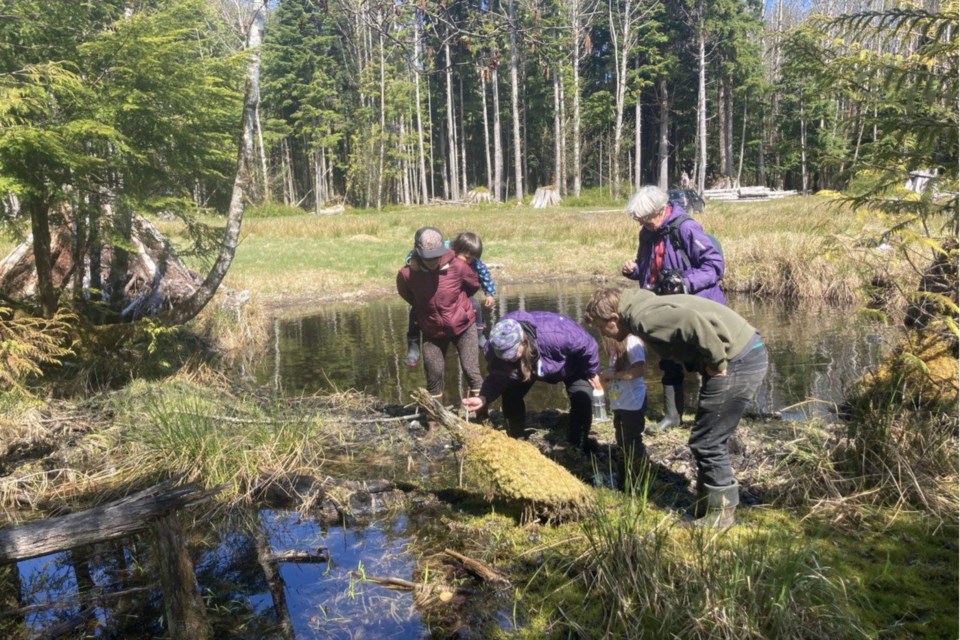Toad counting was a unique way for more than 20 volunteers to spend Mother’s Day in a training session at Chown Slough just outside Masset.
Conservation biologist and leader of the citizen science project and community toad monitoring, Haida Gwaii Toads, is Roseanna Gamlen-Greene.
She said Western toads are the only indigenous amphibian on the archipelago.
“We want to find and protect these breeding sites to ensure the long-term health of toad populations on Haida Gwaii,” Gamlen-Greene said.
Over the last decade, there have been anecdotal reports of declines in their populations but it is difficult to track because there is limited information about how many there are, Gamlen-Greene said.
Right now the goal of the project is to collect baseline population data so that they will be able to detect changes in the future.
Prior to the Haida Gwaii Toads project, Gwaii Haanas National Park Reserve was the only location where toad populations were being monitored.
Toads are loyal to their breeding site and will return to the same one year after year. The sites can be far apart, there may be only one within a 30 km range. Before Gamlen-Greene started her PhD research, scientists knew of only one breeding site outside of Gwaii Haanas.
Gamlen-Greene, with the help of local community members, was able to identify nine more sites using intensive surveys.
It is a “census of toads,” Gamlen-Greene said. The count will start when the toads arrive at the breeding site but she does not know exactly when that will be.
“It changes every year, we think it’s quite dependent on the temperature. So we think it’s probably a bit behind this year because we had quite a cold start to the spring. But it should be sometime in the next 10 days, they’ll come in and they’ll start to breed.”
The project relies on community members to help with the count and does not require any specialized equipment. There is an online website called iNaturalist, where volunteers can input their observations.
While Gamlen-Greene is leading the project in 2022, she just wants to “get the ball rolling and then step aside to allow the community to drive the project,” the Haida Gwaii Toads website states.



